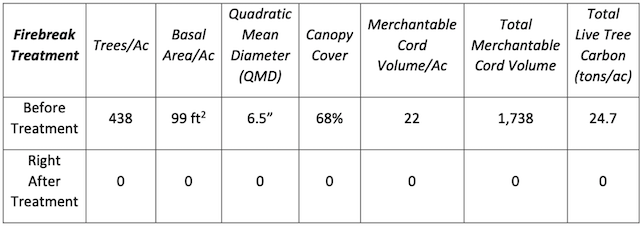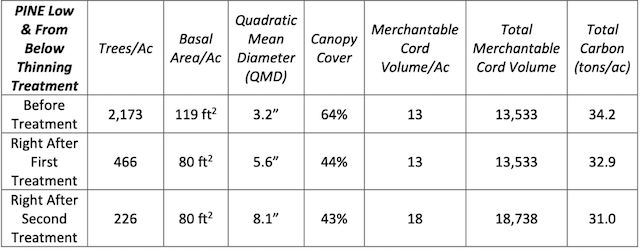DEP’s Carbon Analysis Of Their Pinelands Logging Scheme Is A Sham
Must Not Become Model For DEP, Pinelands, & Highlands Approach To Carbon In Forests
DEP Already Has A Slogan Teed Up: “Carbon Defense”
“The proposed project will significantly reduce the forest carbon pools throughout the site overall due to the removal of forest overstory.” ~~~ NJ DEP Forestry Plan
I initially wrote that the DEP’s Forest Management Plan for the Pinelands failed to consider carbon storage and sequestration. That statement was based on information available to me at the time, which was the Pinelands approval document (which does not address the carbon issues) and the Commission’s brief deliberation on it before voting to approve it.
I just received the DEP plan via an OPRA to DEP (my prior OPRA request was denied by the Pinelands Commission). Upon reading the DEP Plan, I must correct the record and say that I was wrong.
Unfortunately DEP does consider carbon and it is such a flawed, biased, and superficial analysis that it would have been better if DEP completely ignored the issue than to allow this to become what passes for a carbon analysis of forestry management.
There is no scientific basis or support provided. There is a dubious and vague summary attempt at quantification. There is no site specific analysis. There are no binding commitments. There are no enforceable permit conditions. There is no lifecycle carbon analysis. There is no linkage to a Statewide plan or goal. Carbon storage and carbon sequestration are not even distinguished. Claims of “avoided emissions” and “carbon defense” conflict with science. There is no official methodology to conduct this analysis and no regulatory standards or policies in place to govern.
Remarkably, in an email to me urging me not to oppose the plan, despite his full awareness of the contents of the DEP plan, Emile DeVito of NJCF minimized the carbon impacts with this total fabrication – the DEP Plan does not make a commitment to “leaving all the mulch in the forest” and the the Pinelands Commission’s approval does not include an enforceable condition to require it. Emile wrote:
“The logging is nearly all “thinning from the ground up” to remove lower levels of fuel load, and leaving all the mulch in the forest to decompose, very little wood removal
Just the opposite – DEP lists several options for utilization of the logged trees, including “converted to energy” (cord wood, wood pellets, etc) and as lumber or other wood products.
Here is DEP’s carbon analysis, – read it for yourself and then consider that DEP relied on that to support a table which showed a minuscule carbon impact!
“The proposed project will significantly reduce the forest carbon pools throughout the site overall due to the removal of forest overstory. In particular, the flux in carbon before and after each of the treatments will change primarily from live aboveground carbon (removal of trees) to the dead wood pool (increase in slash, tops, etc.) due to harvesting activities. In addition, removed carbon may be utilized and stored by long -term forest products, stored within landfills, converted to energy, or may be left on site to be recycled back to the system depending on the implementation contractor and method of harvesting used to carry out the treatments.“
The Pinelands Commission’s approval document DOES NOT REQUIRE THAT THE CARBON:
“be left on site to be recycled back to the system”
If DEP were serious they would commit to this in their Plan.
If the Pinelands Commission were serious, they would have made this a condition of the approval of the DEP Plan. But no only did the Commission fail to include a permit condition that would mandate that cut trees be “left on site to be recycled back into the system“, the approval explicitly says the opposite: that trees are to be “cut and removed”.
Emile KNOWS ALL THIS BUT MISLEADS THE PUBLIC ABOUT IT ANYWAY.
The DEP Plan then goes further to attempt to justify the fact that logging will “significantly reduce the forest carbon pools throughout the site”.
DEP makes unsubstantiated assertions that would not pass muster in a high school science class:
DEP manufactures, with no scientific support, no site specific analysis, or even an attempt at quantification, the following justification:
However, despite some carbon pool losses, this project will provide significant carbon defense to the surrounding forest through avoided emissions by reducing the risk of a rapid release of carbon to the atmosphere through catastrophic wildfire, including multiple Atlantic white-cedar stands and restored sites located along Bartlett’s Branch which contain significant carbon stores. This project will also allow for a break-up of the fuel ladder and will reduce the risk or likelihood of wildfire spread. Added benefits include making these stands more resilient under pressure from climate stressors such as drought or insect pest activity.
Some DEP claims not only lack scientific support, but conflict with science, e.g. logging creates more GHG emissions than wildfires, so the “avoided” emissions argument is flawed and the term “carbon defense” is a slogan .
There is no consideration or analysis of non-logging alternatives (the “no action” alternative and alternatives analysis of alternative management approaches are fundamental elements of NEPA EIS, but DEP is not subject to NEPA!).
Some DEP claims are far too broad and based on dubious science, e.g. wildfire can be ecologically beneficial so reducing likelihood is not always good (and the driving factors are temperature, humidity, drought, and wind conditions that have nothing to do with or are exacerbated by logging.) Insects like pine bark beetle are driven by warming, not tree density, etc.
If so many young trees (2.4 million) are cut, how could this not significantly impact future carbon sequestration?
How can DEP generate numerical estimates of carbon, when they made no commitments to how the forest will be harvested and the cut trees managed? (i.e chipped and recycled, or burned as cordwood or fuel? See DEP’s options above)
Here are the summary tables DEP included, which raise a host of questions:
The focus on “Merchantable cord wood” gives up the game, no?
(like how is it possible to cut and remove 2.4 million trees, reduce tree density from 2,173 trees per acre to 34 – 226 trees per acre, but only reduce forest carbon by 3.8% – 9% (is this a “net” analysis, i.e. is DEP assuming that all cut trees are not removed but left to be recycled? If so, that’s not what their application says or the Pinelands Commission approved. Is this carbon storage? or is it carbon sequestration? or is it combined storage and sequestration? Is it sequestration on an annual basis? Or over what timeframe?):
Why does the clearcut “firebreak” forest have a 24.7 tons per acre of carbon, the “feathered” forest have 36.6 tons per acre (50% more), and the “thinned” forest has 34.2 tons per acre?
DEP’s flawed carbon analysis can not be accepted – especially the concept of “forest defense”, i.e. log a forest to prevent a future wildfire in an adjacent forest.
It must not become the model for forestry management or analysis of carbon storage and sequestration.



